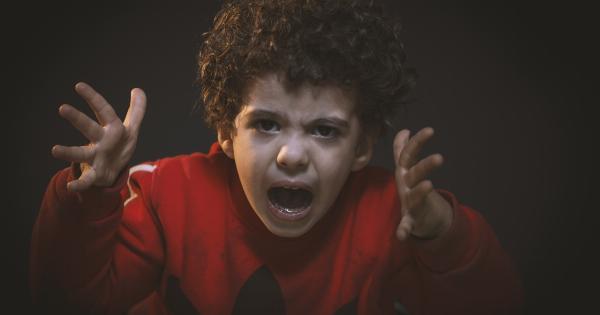Anger is a normal and natural emotion that everyone experiences, including children. It can be a challenging emotion for children to handle, as they may not have developed the skills to express and cope with their anger appropriately.
As parents, it is essential to teach children healthy ways to manage their anger and help them understand their emotions. Here are eight effective strategies to help calm the storm when your child is angry:.
1. Stay calm and model appropriate behavior
When your child is angry, it is crucial to remain calm yourself. Showing anger or frustration towards your child’s anger will only escalate the situation. Take a deep breath and be a role model for how to handle emotions calmly.
By demonstrating composure and self-control, you can teach your child the importance of managing anger in a healthy way.
2. Empathize with your child
Validation and empathy are powerful tools for diffusing anger. Try to understand your child’s perspective and acknowledge their feelings. Let them know that it is okay to feel angry and that you are there to support them.
For example, you can say, “I understand that you are upset right now. Let’s talk about what happened.”.
3. Teach deep breathing exercises
Deep breathing exercises are excellent tools for calming the body and mind. Teach your child simple breathing techniques such as taking deep breaths in through the nose and exhaling slowly through the mouth.
Encourage them to practice these exercises whenever they feel angry or overwhelmed. Deep breathing can help regulate their emotions and reduce the intensity of their anger.
4. Encourage verbal expression
Communication is vital in managing anger effectively. Encourage your child to express their feelings verbally instead of resorting to aggression or tantrums. Create a safe and non-judgmental space for them to openly talk about their emotions.
By giving them the opportunity to verbalize their anger, you can help them gain a better understanding of their feelings and find appropriate solutions to their problems.
5. Teach problem-solving skills
Anger often arises when children feel frustrated or powerless in a situation. Teach your child problem-solving skills to empower them and give them a sense of control.
Help them identify the problem, brainstorm possible solutions, evaluate the pros and cons, and make a decision. By teaching them how to problem-solve, you equip them with valuable tools to handle difficult situations and reduce anger.
6. Set clear boundaries and consequences
It is essential to establish clear boundaries for what is acceptable behavior in your household. When your child becomes angry and crosses those boundaries, enforce appropriate consequences.
Consistency is key in teaching children about accountability and self-regulation. By enforcing consistent consequences, you help your child understand that their anger does not excuse disrespectful or harmful behavior.
7. Encourage physical activity
Physical activity can be an excellent outlet for channeling anger in a healthy way. Encourage your child to engage in physical activities that they enjoy, such as going for a bike ride, kicking a ball, or dancing.
Physical activity releases endorphins, which are natural mood enhancers. By incorporating regular exercise into your child’s routine, you can help reduce their overall anger levels.
8. Seek professional help if necessary
If your child’s anger issues persist despite your efforts, it may be beneficial to seek professional help.
A trained therapist or counselor can work with your child to explore the underlying causes of their anger and provide them with appropriate coping mechanisms. Professional intervention can provide valuable guidance for both you and your child, ensuring they receive the support they need.
Dealing with a child’s anger can be challenging, but with the right strategies in place, it is possible to help them learn to manage their emotions effectively.
Remember to stay calm, empathize with your child, and teach them healthy ways to express and cope with their anger. By providing them with the necessary tools and support, you can guide them towards emotional well-being and a more peaceful home environment.




























